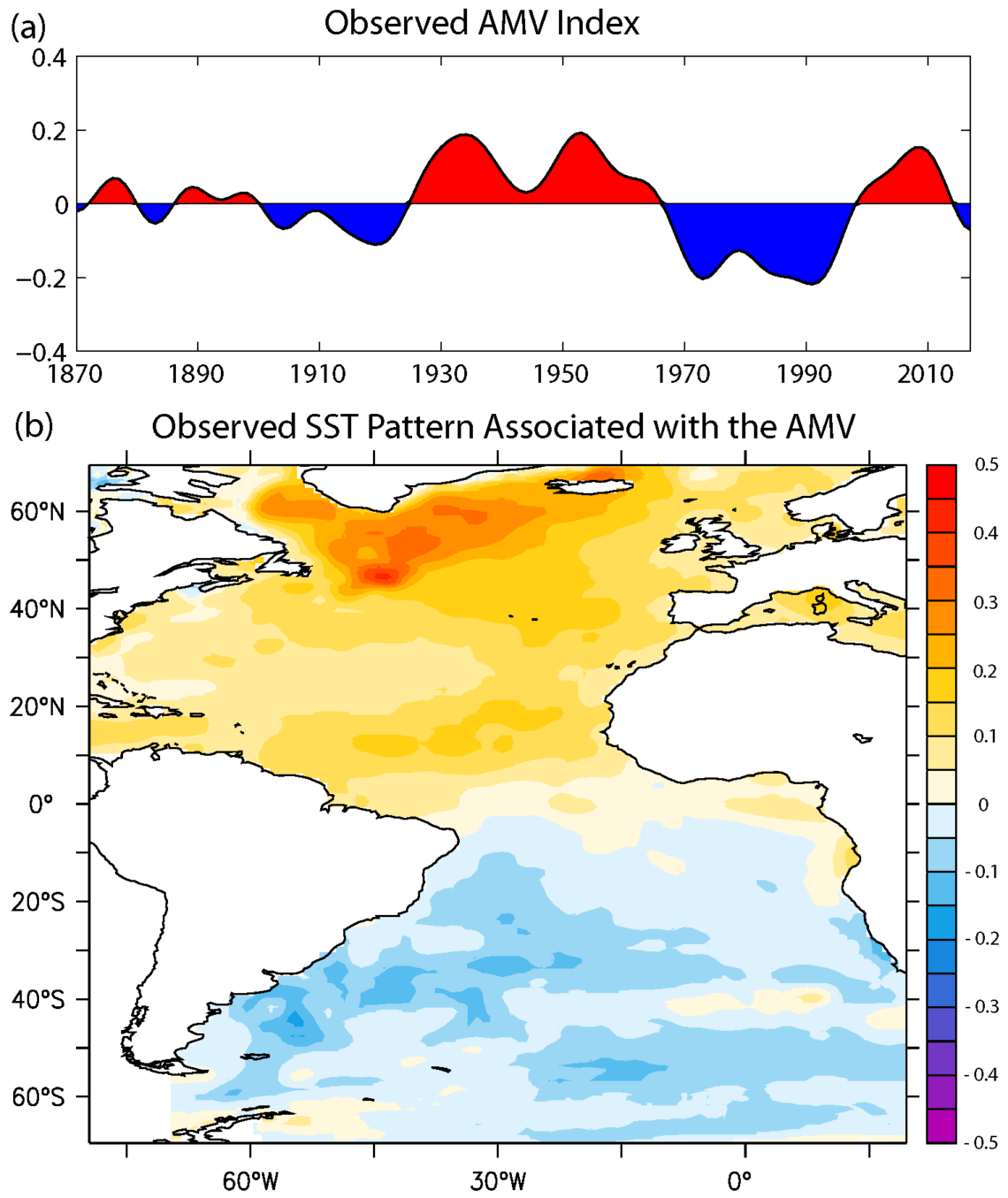July 18th, 2019
Key Findings
- There is strong evidence that multidecadal AMOC variability is a crucial driver of AMV and associated climate impacts, and a significant source for their enhanced decadal predictability and prediction skill. The AMOC-AMV linkage is consistent with all observed key elements of AMV.
- This synthesis of recent studies suggests an essential role of AMOC in AMV-related climate phenomena including: intertropical convergence zone; Sahel/Indian monsoons; Atlantic Hurricanes; El Niño Southern Oscillation; Pacific Decadal Variability; North Atlantic Oscillation; climate over Europe; North America, and Asia; Arctic sea ice and surface air temperature; and hemispheric scale surface temperature.
- Paleo evidence indicates that a similar linkage between the multidecadal AMOC variability and AMV may also have existed in the preindustrial era, and that AMV has enhanced multidecadal power significantly above the red noise background and is not dominated by external forcing.
- The role of the AMOC in AMV and many associated climate impacts has been underestimated in most state-of-the-art climate models, posing significant challenges but also great opportunities for substantial future improvements in understanding and predicting AMV and associated climate impacts.
Rong Zhang, Rowan Sutton, Gokhan Danabasoglu, Young-Oh Kwon, Robert Marsh, Stephen G. Yeager, Daniel E. Amrhein, Christopher M. Little. Reviews of Geophysics. DOI: 10.1029/2019RG000644
This paper provides a comprehensive review of the linkage between multidecadal Atlantic Meridional Overturning Circulation (AMOC) variability and Atlantic Multidecadal Variability (AMV) and associated climate impacts, by synthesizing recent studies that employed a wide range of approaches (modern observations, paleo reconstructions, and climate model simulations). The AMOC, which includes a northward flow of warm salty water in the upper Atlantic and a southward flow of the transformed cold fresh North Atlantic Deep Water in the deep Atlantic, transports a huge amount of heat northwards in the Atlantic. There is strong observational and modeling evidence that multidecadal AMOC variability is a crucial driver of the observed AMV and associated climate impacts, and an important source of enhanced decadal predictability and prediction skill.
The AMOC-AMV linkage is consistent with key observed elements of AMV. This synthesis also points to a leading role of the AMOC in a range of AMV-related climate phenomena having enormous societal and economic implications, e.g., Intertropical Convergence Zone (ITCZ) shifts; Sahel and Indian monsoons; Atlantic hurricanes; El Niño Southern Oscillation; Pacific Decadal Variability; North Atlantic Oscillation; climate over Europe, North America, and Asia; Arctic sea ice and surface air temperature; and hemispheric-scale surface temperature.
Paleoclimate evidence indicates that a similar linkage between multidecadal AMOC variability and AMV and many associated climate impacts may also have existed in the preindustrial era; that AMV has enhanced multidecadal power significantly above a red noise background; and that AMV is not primarily driven by external forcing. The role of the AMOC in AMV and associated climate impacts has been underestimated in most state-of-the-art climate models, posing significant challenges but also great opportunities for substantial future improvements in understanding and predicting AMV and associated climate impacts



